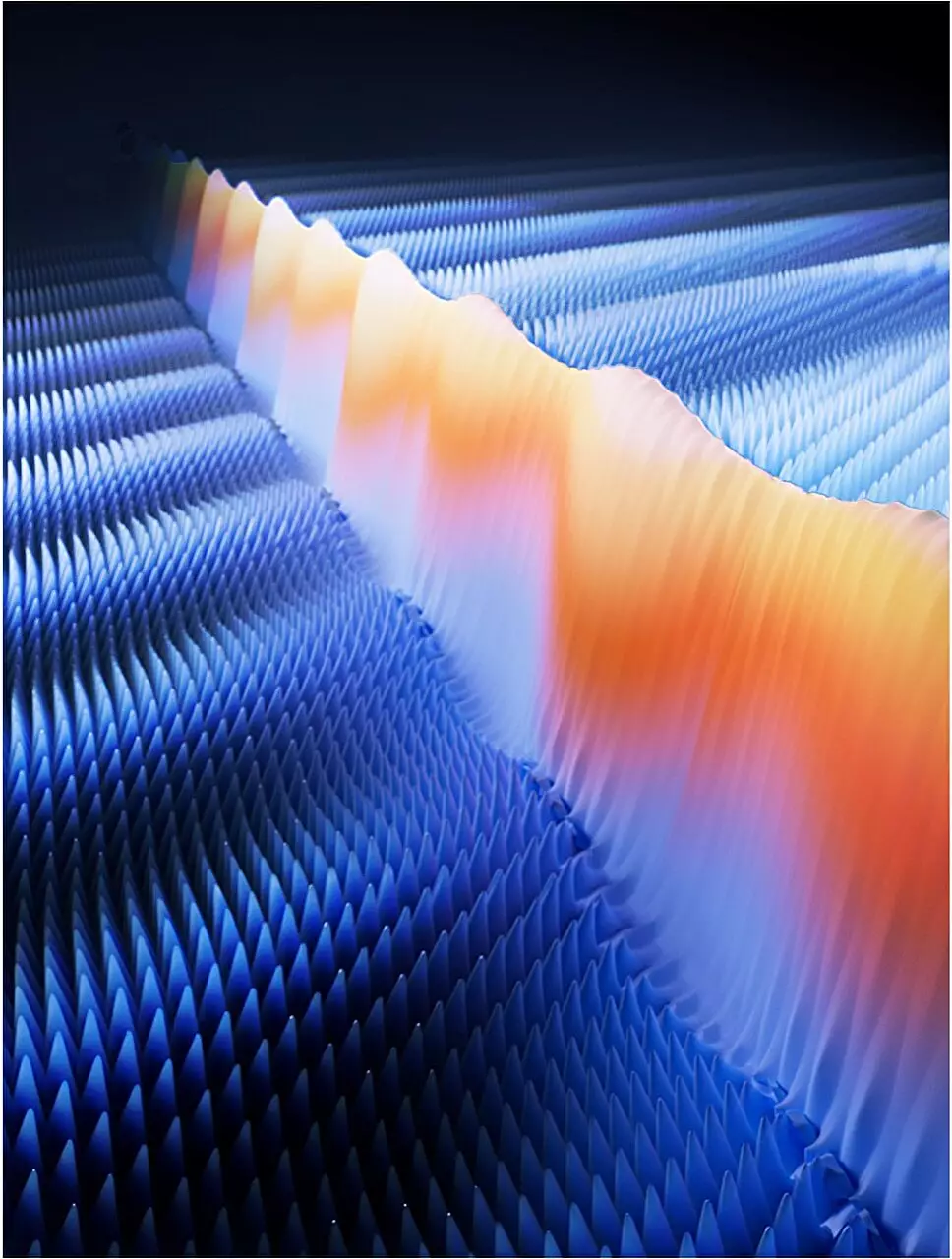In the fascinating realm of quantum materials, charge density waves (CDWs) have emerged as profound phenomena. These intricate states arise from a static modulation in the conduction electrons coupled with periodic distortions of the crystalline lattice. Found in a spectrum of condensed matter materials, from high-temperature superconductors to quantum Hall systems, the exploration of CDWs raises critical questions about the fundamental nature of matter itself. Despite being a significant focus of research, the experimental observations surrounding boundary states that result from CDWs remain remarkably limited. However, recent groundbreaking work from researchers at Princeton University shines a new light on this enigmatic aspect of condensed matter physics.
Princeton’s Pioneering Research: Peering into Ta2Se8I
The collaborative effort led by physicists including Maksim Litskevich has unveiled the bulk and boundary modes of the CDW in the topological material Ta2Se8I. Their study, recently published in *Nature Physics*, reveals the unique properties of this quasi-one-dimensional compound. Litskevich articulates the duality of their work in connecting the dots between CDWs and topological states. “Our research group focuses on discovering and investigating novel topological properties of quantum matter,” he states, encapsulating their investigative spirit.
The recent discovery follows their earlier insights into the Kagome lattice materials, where they identified the coexistence of CDWs and gapless edge modes. However, distinguishing relationships between these states can be challenging. Litskevich notes a crucial point: the mere presence of these phenomena does not imply causation; rather, they could manifest independent or trivial connections. This complexity underpins the researcher’s journey from Kagome materials to Ta2Se8I, where they witnessed tantalizing interactions between topological properties and charge density waves.
Unveiling Topological Edge States
Utilizing advanced scanning tunneling microscopy (STM), the researchers gained unprecedented access to the electronic landscape of Ta2Se8I. At temperatures ranging from 160 K to 300 K, this low-temperature charge density wave state exhibited striking features. The STM technique is remarkable; it allows scientists to employ quantum tunneling principles to probe materials at atomic scales, facilitating intricate imaging that reveals the nuanced behavior of electrons in various states. According to Litskevich, this level of detail was instrumental in detecting the charge density wave and mapping the fascinating in-gap edge states.
By employing tunneling spectroscopy, the researchers could intricately measure the tunneling current and interpret the energy levels of electrons, providing insight into charge density waves in Ta2Se8I. This approach highlighted the disparities between low and high charge regions, emphasizing the underlying physics of the observed phenomena.
Bridging Gaps Between Quantum States
The most thrilling aspect of this research is the newfound connection between CDWs and topological states. Litskevich’s team provided compelling evidence suggesting that the boundary modes oscillate in harmony with the characteristics of the CDWs themselves. This confirms a hypothesis that the two states are intrinsically linked, thus bridging a significant gap between traditionally isolated areas of study within quantum materials research. Co-author Md Shafayat Hossain elaborated on the groundbreaking nature of their findings, revealing a distinctive topological boundary mode that may redefine understanding in this field.
Furthermore, they discovered that the insulating gap engendered by the CDW in Ta2Se8I remains stable up to 260 K, showcasing robustness that could pave the way for practical applications in quantum technologies. Hossain’s insights suggest a new phase of matter in this material—the mysterious axion insulator. However, they also question established theoretical frameworks, proposing that Ta2Se8I may not fit the conventional classification.
Navigating the Future of Quantum Research
The implications of this work extend beyond mere observation. The study lays groundwork for exploring future quantum states and potentially transforms the landscape of quantum computing and nanotechnology applications. As researchers aspire to identify and characterize other elusive quantum phases, they draw parallels between charge density waves and superconductivity, suggesting pathways to topological superconductivity.
Hossain’s ambition resonates throughout the research community: To inspire a broad search for charge-density-wave-induced phenomena across different topological materials, thereby enriching the understanding of condensed matter physics. The road ahead is filled with potential discoveries, as the researchers target the order parameters related to the exotic quantum states uncovered in their study.
The collaborative nature of this research, along with the innovative technologies employed, reflects the dynamism of contemporary scientific inquiry. Each revelation about charge density waves brings with it an opportunity not only to understand our universe better, but also to harness these intricate mechanisms for transformative technological advancements. The future of quantum materials beckons researchers to navigate uncharted territories, where the secrets of the quantum world await discovery.

